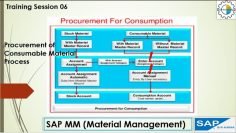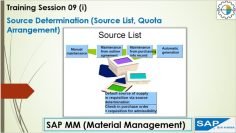This video explains the concept of External Operations in SAP Materials Management, focusing on how it simplifies the process of outsourcing operations in a production order. The key points discussed in the video are:
- Introduction to External Operations: External operations are used when one or more operations in a production order cannot be executed internally due to various constraints and need to be performed by a vendor. This can be done either through a subcontracting process or as external operations within the production order.
- Issues with Subcontracting: When many operations in a production order are outsourced, subcontracting can create issues like more master data, more orders, improper link between parent and child materials, and less clarity on order progress.
- Advantages of External Operations: External operations simplify the process by requiring only a single level bill of materials and a single routing. However, phantom materials representing the external operations are needed.
- Master Data for External Operations: The master data required for external operations include the parent component and raw material, phantom materials for each external operation, purchasing info records for the material group, and a work center representing the supplier.
- Creating a Bill of Materials: The bill of materials for the parent component includes the phantom materials as child components. The phantom materials are included in two lines, one with a negative quantity to bring the phantom stock into the system, and one with a positive quantity to consume the phantom stock.
- Creating a Routing: The routing for external operations includes the purchasing info record and a control key for external operations. The phantom materials are assigned to the specific operations in the routing.
- Production Order Execution: The execution of a production order with external operations involves creating and releasing the production order, issuing the raw material to the operation, adding the phantom material to the stock, creating a purchase order for the external operation, sending the phantom material to the supplier, receiving the processed material from the supplier, and confirming the operation.



























































